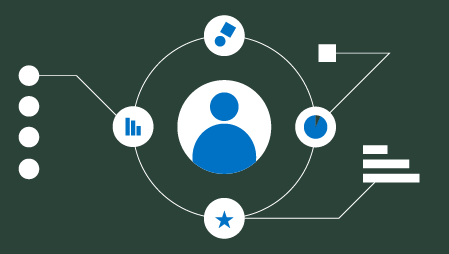Ready to become DevOps Engineer? Browse courses like AWS Certified DevOps Engineer—Professional Exam Training developed by industry thought leaders and Experfy in Harvard Innovation Lab.
In 2012, Boston Consulting Group (BCG) defined the answer to the conflict between traditional IT architecture and practices and the need to get digital products to the marketplace as soon as possible. They called it Two-speed IT. Yet consulting companies, even highly respected ones like BCG, do not always get it right.
The broad premise was that the established IT business units within an organization worked at a pace that was too slow for the digital demands, using practices that did not provide speedy results. In other words, they were not agile. What BCG recommended is that CIOs split their IT into 2 units: a traditional “industrial-speed IT” and a new “digital-speed IT”, so that the existing infrastructure could continue to provide support for the back-end services, usually run on a mainframe, while a bunch of new kids on the block could deliver rapid solutions for the digital enterprise.
Maybe it was the catchy phrase, but other consulting companies also borrowed the idea. Accenture took it further and defined “multi-speed” both for IT and the enterprise in their work for the World Economic Forum (WEF) on digital transformation (see p. 23).
In June 2016, consultants Bain and Co struck a body-blow against two-speed IT, based on some of their experiences in the field where companies had taken this route. A couple of months later, BCG did a rethink and maintained that it was a good idea at the time, but now enterprises must take a new approach.
Some Flaws in the Two-speed IT Approach
Two-speed IT had some major flaws in how to address the old versus new IT dilemma.
● It added yet another layer of complexity to a problem that was in a drastic need of simplification.
● It brought in a rival culture without trying to align it.
● It disregarded the effect this split would have on employees, especially those in the “slow” camp.
● It reduced the company’s sustainability by delaying a general move to agile development and DevOps implementation.
● Legacy systems may be slow to change, but the people who work with them can show agile developers a thing or two.
Keeping It Simple
One of the main problems with organizations attempting digital transformation is an embedded complexity in their processes. This complexity has usually arisen from being product-focused rather than customer-focused. While tackling the process innovation is outside the scope of this article, it is not something that should be delayed. With two-speed IT, one now has to introduce a whole new IT model for the agile development, which includes more new processes, instead of striving for simplicity.
Culture Eats Strategy for Breakfast
It’s easy to wonder if two-speed IT had any input from HR and Change Management. No organization should be leaving behind or underestimating their legacy system and the employees who keep it all running. The mainframe is far from dead: here are some stats on IBM’s latest mainframe, the Model Z.
When it comes to culture change or adaptation, the wise approach is to transform IT in its entirety. This does not have to happen all at once, as it can be phased in. As BCG themselves note, Peter Jacobs of ING Bank says:
“I would rather work agile at my core bank system than at the channels.”
The Need to Retain and Acquire Talent
One of the biggest challenges of digital transformation is finding and keeping the talent that will be needed for the future. Creating two IT camps will demotivate the employees in the legacy (“slow”) camp. They could also be convinced to look elsewhere, because their future does not look inviting. These employees are actually very productive. Gartner identified this in their 2015 report:
“Between 2005 and 2014, the ratio of mainframe MIPS to mainframe full-time equivalent employees has grown 351%. As a matter of historical significance, never in the history of IT have so many owed so much to so few, as when it comes to dedicated, long-serving mainframe employees.”
This is why Peter Jacob’s words resonate with so many CIOs and CEOs.
Short-term Improvement Eroding Long-term Sustainability
Companies that took a left turn into two-speed IT found mixed results as well as delayed their long-term objectives for full digital transformation. Bain mentions a consumer credit organization that had a less than satisfactory outcome following this path, and recommend that companies do not split their IT function.
The short-term goal of IT business units should be to move to the agile philosophy, which is a milestone on the roadmap to continuous delivery and implementing DevOps. Any organization that still wants to be around in the next decade needs to adopt the DevOps culture and mindset. Again, this is not an overnight change.
DevOps is as much a cultural mindset as a performance model. Successful DevOps fuses development and operations into a cohesive, continuous operation, where change, delivery and deployment are both seamless and frequent. This is not a nice-to-have; the pace of business keeps accelerating, and IT needs to anticipate and support these changes as rapidly as possible while maintaining quality and ensuring security from cyberattacks.
Understanding How Turnkey Operations Function
The impression that employees who support the legacy systems work slowly is completely misleading. An employee who is called out at 2 am to fix a mainframe crash has about 30 minutes to diagnose the point of failure and apply a fix to the production system that will get the system running again. This takes nerves of steel as well, and there is nothing slow about such a response. All that has changed over the years is that they can patch the system online and don’t actually have to commute to the operations centre. When you consider that this response is delivering a quality change as quickly as possible to the stakeholders (the company and its customers), such support could come straight out of the Agile Manifesto. Believing that employees supporting legacy systems cannot change is making a serious underestimation of their capabilities.
Full Steam Ahead to Continuous Delivery
Hopefully we have persuaded you to avoid two-, three- or any-speed IT, as it only brings additional complexity to a very intricate issue. Embracing the DevOps culture is necessary for IT in order to deliver reliable, secure, quality systems continuously. Depending on where you are on this journey, you may still be implementing Agile practices. If you have progressed on Agile, it is time to contemplate DevOps.
It makes sense to bring some specialists on board who are seasoned in DevOps as a service. They can assist you with the mechanics of DevOps, such as CI/CD Delivery and embedding automated testing. Test automation in DevOps is a far cry from any previous automation you have applied to testing and is critical to ensuring continuous delivery with high quality products.
The move to DevOps is growing, which is demonstrated by these statistics from Practitest’s report on testing, where the adoption of DevOps grew by 60%.
This, in turn, has created a growth in automated testing: 86% of respondents claimed that they had automated testing to some extent, with 46% saying they use automated testing for continuous integration.
Your move to a cohesive Agile and DevOps IT environment may take some time, but you should not have the stretch targets of Google, with its multiple daily updates. Ensure that you take all your IT staff on the journey and don’t leave anyone behind!




